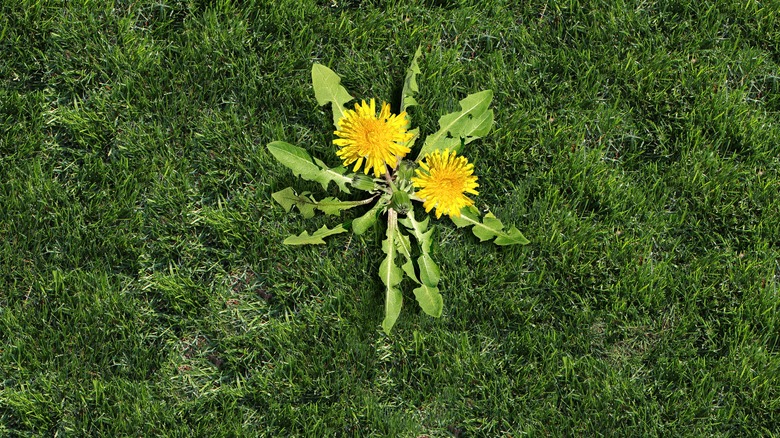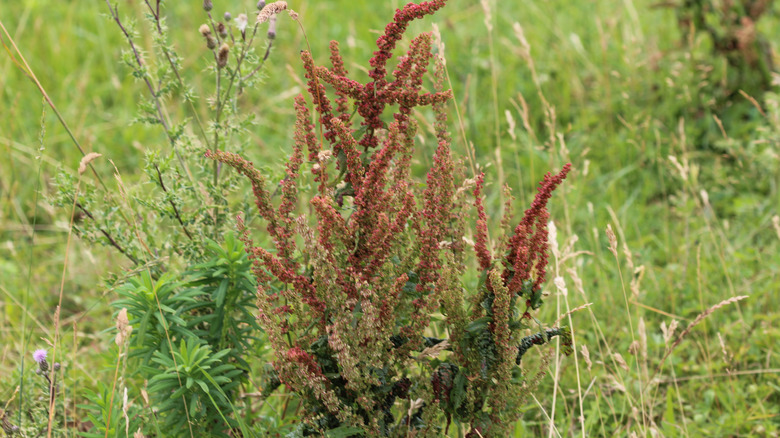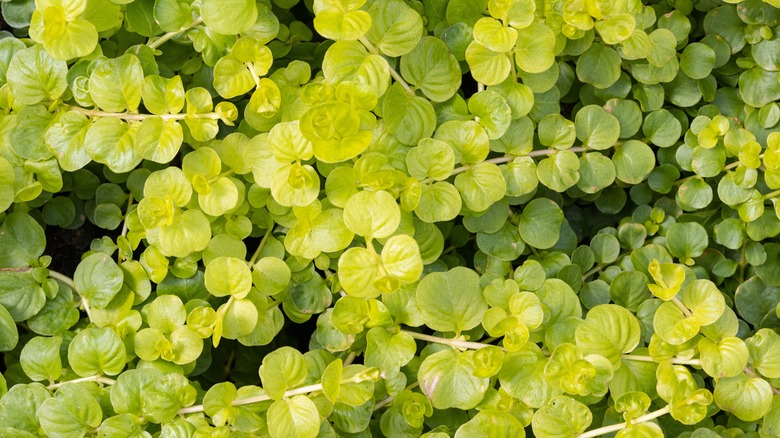What The Weeds Growing In Your Yard Say About Your Soil (And What To Do About It)
As the spring season unfurls, you anticipate the early blooms that'll soon grace your garden. But what you may encounter instead are hardy weeds, a staggering blow since you assumed you cleared them all out the last time. Yet here they are, reaching for the sun, shining with unbridled joy. But before you give into despair, step back and deliberate: Why are these pesky invaders determined to gatecrash your yard? Weeds are a nuisance, but they're storytellers, too, or at least some specialized ones are — which is why they're sometimes called "indicator species." Such plants have insider information about the cultural issues present in your yard, including pH levels, fertility, hardpan, and irrigation, and respond accordingly. For instance, if you discover white clovers, it implies your soil may be nutrient-deficient. Similarly, yellow nutsedge, crabgrass, and dandelions indicate excessive moisture, poor drainage, and high compaction, respectively.
However, the results might not always be on point, as weeds are highly adaptive. For instance, spotted spurge (Euphorbia maculata) thrives in both dry and over-watered soils — so get your soil tested to settle the debate. Also, this trick works only if most of your yard is dominated by a single weed or when a community of multiple species thrives in the same spot. A Hill and Ramsay publication also found that perennial weeds are better indicators, given their longer association with your turf.
High acidity and poor fertility indicators
Soil pH levels between 6.0 and 7.2 hit the sweet spot for most plants. If the soils become highly acidic or alkaline, plants get hurt, and weeds find their footing. So, when you find clover (a popular groundcover when planted deliberately but weedy when not) or buckhorn plantain, it's your cue to stop treating the soil with lime since it's become highly alkaline. On the other hand, if you find ornamental, albeit weedy, plants like broomsedge or red sorrel, the soils are acidic and it's lime time. Alternatively, you may grow native, acid-loving plants, like bleeding hearts, ferns, or dogwood pine, to keep weeds in check. Interestingly, acidity levels also affect a weed's look. So, while dandelions, wild mustard, and chickweeds appear lush when the soil is only slightly acidic, they turn chlorotic (with lifeless yellow foliage) when the pH levels drop below 5.0.
Weeds also have much to tell you about the soil's fertility, especially when its nutrients are imbalanced. Annuals like redroot weeds appear when the iron-manganese ratio is up for a toss, as do perennials like quackgrass. Meanwhile, if you get the much-despised horsetails and stinging nettles in your yard, calcium may be the missing ingredient. Under such circumstances, amend the soil per the requirements of your desired plants. Otherwise, consider growing ornamentals like lamb's ears and yarrow that survive on low nutrients. Drought- and shade-tolerant northern bush honeysuckle is another worthy option.
Soil moisture and compaction indicators
Very few plants tolerate wet feet or drought for long, but weeds are a cut above the rest. If you can't determine whether the compost is doing its job, though, weeds might just be the hint you need. Barring rain gardens or as low-maintenance grass-free yard alternatives, mosses and sedges are generally an unwelcome addition to any yard. But they succeed because your soil holds excess moisture. Other garden weeds like moneywort, pearlwort, and annual bluegrass capitalize on this opportunity, too. Work on improving drainage by moving to raised beds or installing French drains. Otherwise, stick to growing water-loving plants like cardinal flowers (imagine all the hummingbirds!), swamp milkweed (save the monarch butterflies), or blue flag iris (a little beauty doesn't hurt).
Conversely, if you find your yard teeming with crabgrass, woodsorrel, prostrate knotweed, yarrow, or purslane — don't confuse it for its poisonous look-alike — know that your soil is struggling to retain water, stressing your plants. So, switch to growing eye-catching drought-tolerant plants, including black-eyed Susan and daylilies, that will ultimately pip out their aggressive competitors, or apply mulch to improve the organic content of your soil. Don't forget to check the potassium levels too, as they can be scarce in dry soils. Finally, if your turf experiences high foot traffic or infrequent aeration, your compacted soils may get overridden by chicory and corn speedwell. Core aeration, compost, and cover crops pave the road to liberty.


